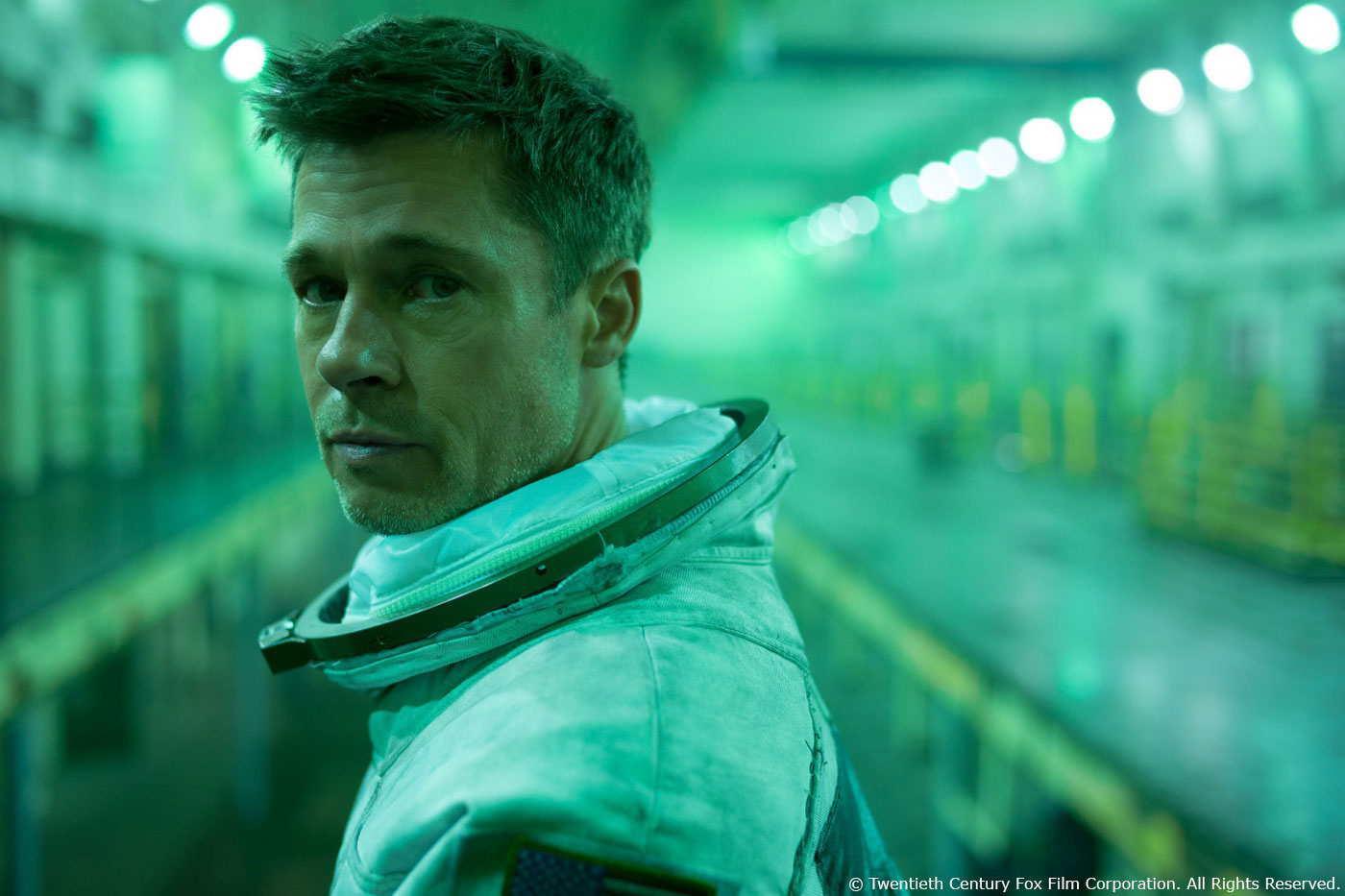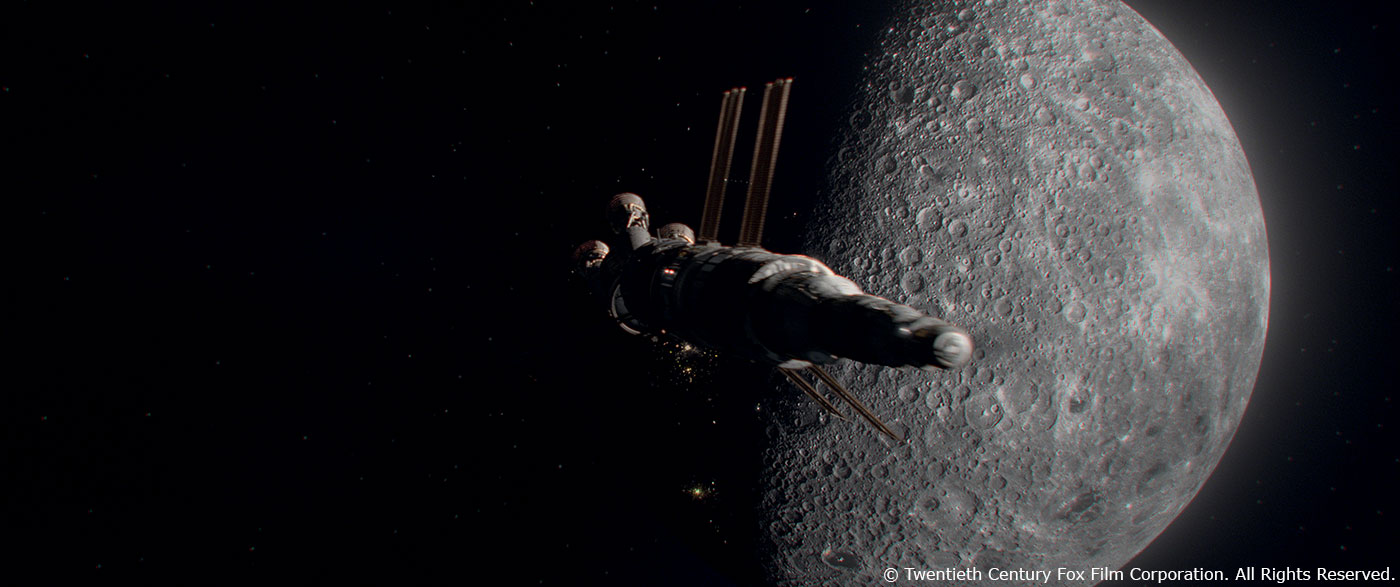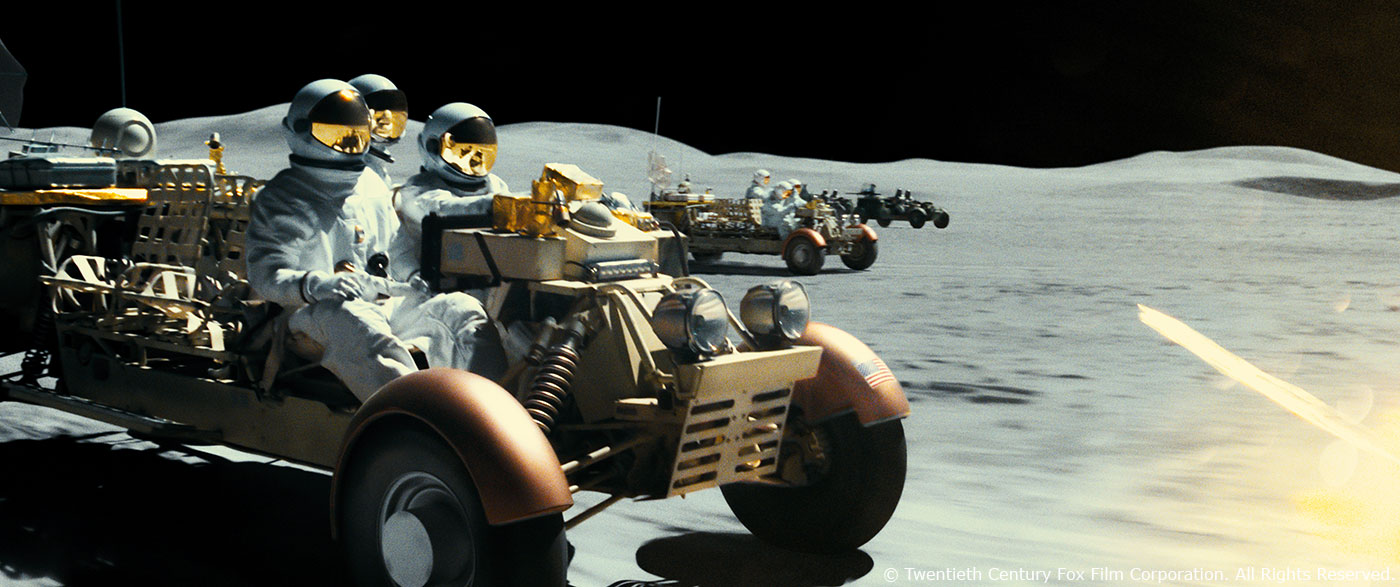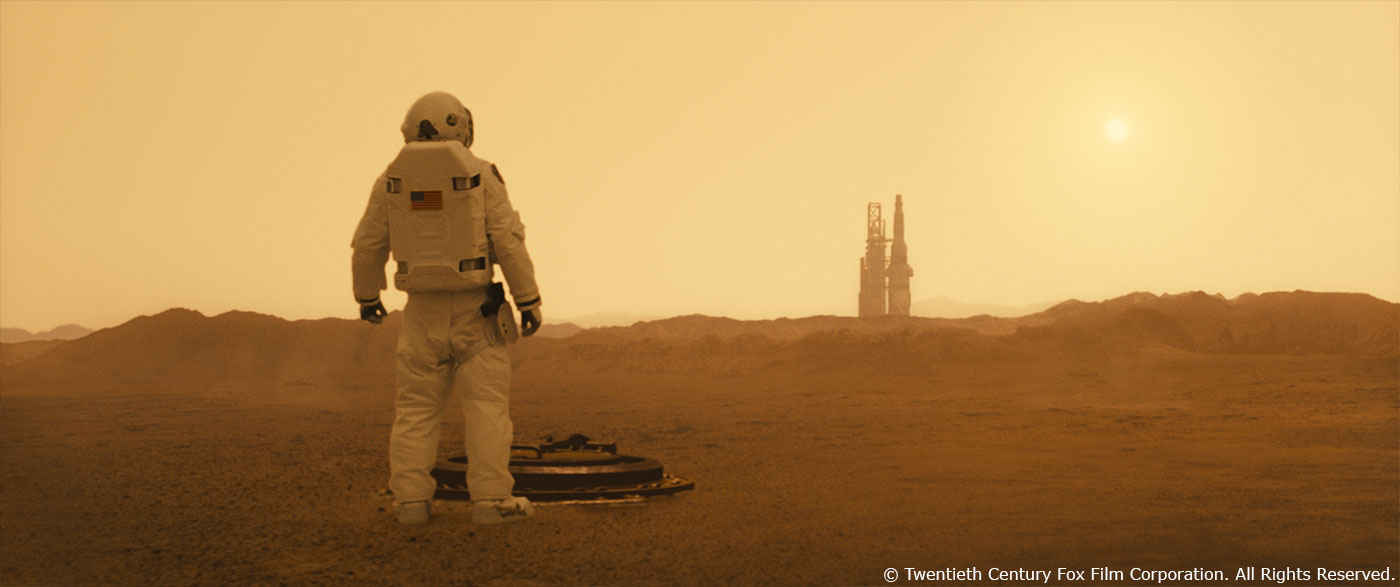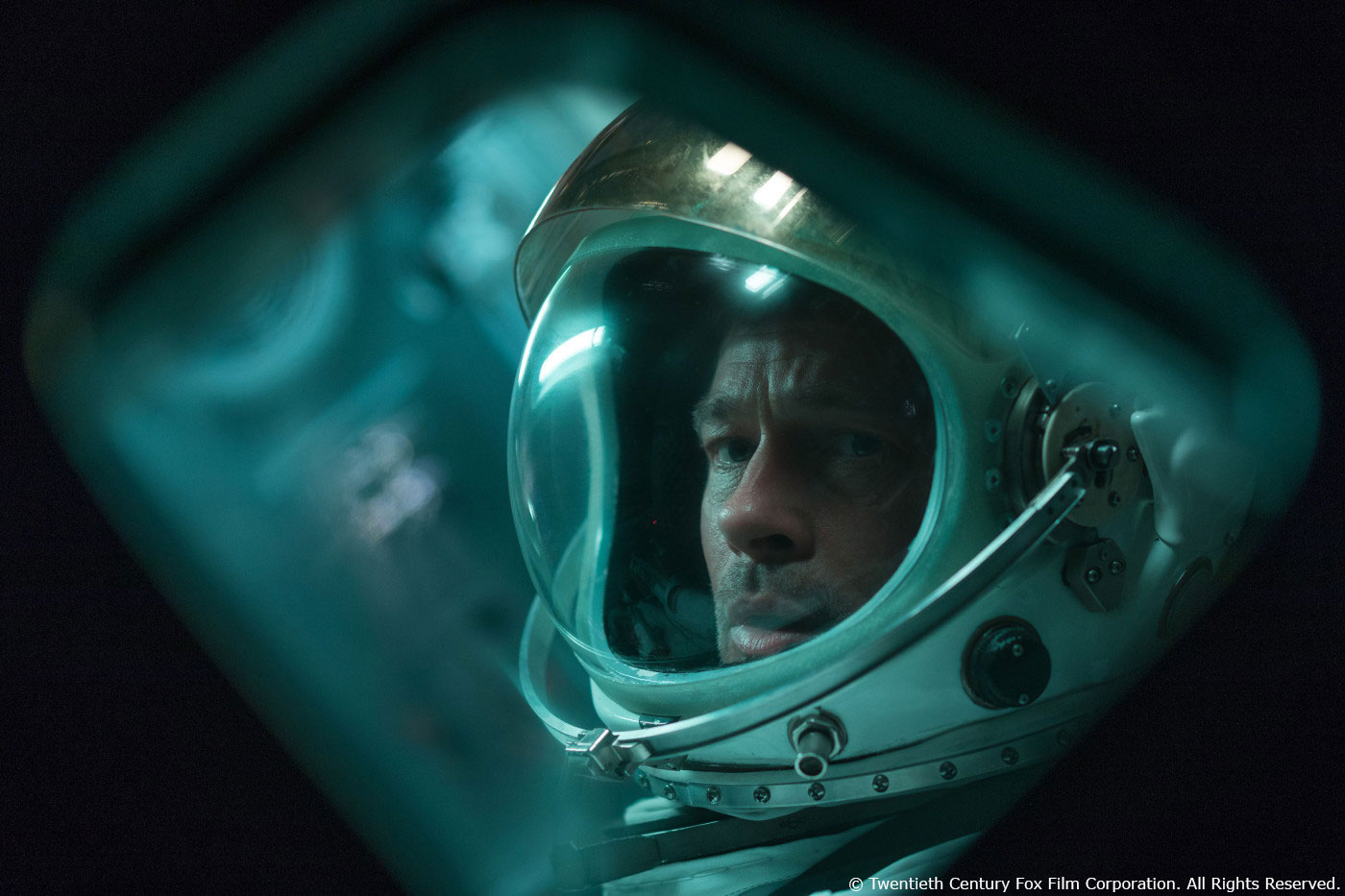Allen Maris began his career in visual effects more than 20 years ago. He has worked on many films such as THE CHRONICLES OF RIDDICK, PROMETHEUS, GODZILLA and A CURE FOR WELLNESS.
What is your background?
I was an ad/design major in college and when I started working on films, I came up through the production side of VFX. I did some on-set data wrangling, coordinating, plate supervision, producing and supervising now.
How did you get involved on this show?
I knew Michael Schaefer, the president of New Regency, from when he was a producer on THE MARTIAN and ALIEN: COVENANT through Scott Free that I consulted on for Ridley. He called me on this one to see if I wanted to get involved.
How was the collaboration with director James Gray?
I found working with James quite interesting as I got to have many conversations about what the meaning of a scene was and what he was thinking when he wrote it. He’s very open and freely shares his feelings. He’s also very trusting in his crew and creates relationships that allow us to freely share out thoughts about the work as well.
What was his expectations and approach about the visual effects?
James is was so focused on story, character and the realty of what was happening that it wasn’t good enough to just create a nice looking shot but they were required to not detract from the story, and to tell their own story that served the overall movie and had to be scientifically plausible. All the graphics had to be designed with function in mind. And he would ask “what do those numbers mean?”, referring to a little text in the corner of the screen. And if there wasn’t an answer about the true function, it had to be fixed.
How did you organize the work with your VFX Producer?
Well, I was the VFX producer too, so I would shift gears as needed. During pre-production, we hired Brad Parker to supervise the plates for us. And he did a great job, which allowed me to focus on planning of the overall production to make sure we shot the pieces we needed to shoot. And then during post, it’s become fairly routine for me to juggle both jobs, so I just have to prioritize based on what’s important.
Can you tell us more about the previs and postvis process?
I hired Halon (with Clint Reagan, whom I did PROMETHEUS with) in pre-production as we had some tricky set pieces to figure out. Mostly it had to do with how much of the sets would the art department build and how much would be a digital extension. The antenna sequence and the end sequence at Neptune come to mind as falling into that category. And then there were aspects where we had to help flesh out the story more once we got into the reality of trying to convert what was on the page into something that was shootable and we could successfully put into production in post.
For postvis, Halon came back, this time with Casey Pyke, leading his crew. This time it was all about helping editorial and myself to work out the sequences and start populating many of the plates and blue or black screens with the appropriate background.
Where was filmed the various parts of the show?
All the stage work was done in downtown LA at the LA Hangar Studios. Most all of the interiors were location work around LA that art department converted or enhanced to work for the vision of the movie. The moon rover chase was shot at Dumont Dunes, CA in the Mojave desert.
Can you explain in detail about your work and the challenges of the fall of Brad Pitt from the Antenna?
The previs was invaluable in figuring this one out. We had to figure out how much of the antenna could we build, and could we stage the action in a way to allow only 2 pieces to be built. Once production built that on blue screen, they would shoot as many pieces with Brad as they could, and then use a double to do the stunts. We added a full CG environment and extended the antenna up and down as needed. From there, after he’s blown off the tower, we went into full CG shots for a bit. The close ups of Brad were on stage and we added the CG BG to those. Once “Roy” gets into the atmosphere, we went out to San Luis Obispo, CA and shot some aerial skydiving. Travis, our stunt guy, and a camera operator jumped from 13,000 feet out of a helicopter and did all the really great tumbling out of control, deploying the chute and then the landing shots. Many of those shots required BG replacement since he’s supposed to be much higher than the 13,000 feet we did. Once in post, the biggest challenge to that was creating the photorealistic earth BG environment from up high before the action takes place. That was about 80,000 feet in the air, and there’s just not much in the way of good reference from that altitude. The normal tricks of adding haze to the CG wouldn’t work because of the such thin atmosphere at that height. So it was a struggle to make things look believable in those conditions, but I think Olaf and Mr. X did a great job.
How did you work with the art department with the various spaceships?
The ILM art department did some of the initial designs for us during the early days. As we started to figure out the angles we’d be shooting, with the help of previs or storyboards, we’d all come to agreement on what would be built. Mostly it was the hatch doors so we could enter and exit the ships and then during the Neptune sequence, the spinning antenna that he flings off of was also built on stage. And then production built all the interior ships that we would film.
Can you elaborates about the design and creation of the Cepheus?
The idea with the Cepheus was that it was a long range traveling ship. After consult with JPL and NASA, they felt we’ll be using conventional rocket engines and fuel for quite some time when launching since you get a very high weight to thrust ratio. But once in space, the idea is that you need something to help keep the craft going, so technology like nuclear fusion would be used since you would need low, but continuous power. This ship, along with all crafts were designed with utility in mind. They’re not fancy, but they feel like they could have been designed by NASA and not a Hollywood production.
What was your approach about the zero gravity shots?
Because we were on a tight budget and shoot schedule, we didn’t have the ability to do elaborate work or use motion control like they did so successfully on GRAVITY. And this also kept in line with James’s desire to not detract from the story, so doing elaborate camera moves or anything like that would start to pull the audience out of the moment.
How was filmed the zero gravity shots?
The art department built a horizontal set that was the complete and full interior and then built a smaller piece that hung vertically that we’d extend by shooting plates from the horizontal one. The actors would be hung from a wire rig in the ceiling and lowered down the set to give the feeling of floating towards camera.
How did you work with the SFX and stunts teams?
Stunts had to deal with all the rigs required to sell the zero gravity. So with Rob and his crew, it was about figuring out how to accomplish what was done in previs, how he could build a rig to accomplish that and also how could we hide it the best we could to reduce the paint clean up. Frank & Roland in SPFX were involved in building a rotating rig used for the Roy & Dad spinning scene on Neptune, as well as providing elements to be used in various places. They did the big crash on the moon where they pulled one of the rovers into a concrete barrier set out in the desert. They used frozen chunks of coffee in the desert to simulate the moon regolith impacts when the ground is hit with the Stiletto fire.
Which stunt was the most complicated to enhance?
I think the above mentioned crash on the moon. There were many elements that had to be comped together for that. A FG rover piece, a separate piece for the stunt doubles to get their performance to line up with the timing of the shot, and of course the big impact into the concrete barrier which had a lot of debris. Then all the digital elements that got added in, like the moon surface, the solar farm, new concrete support columns, impact pieces and dust on top. It was quite an involved shot, but I think it works quite well.
How did you design and create the Surge effect?
James was keen to make this as organic and photographic as possible. We ended up filming out the shot with the final environment and before processing, Mark Van Horne at Fotokem created a set up to flash the frames and expose them to a light on his phone, which gave us the cyan blue flash. He also damaged some of the emulsion by spraying acid on the negative and then processed the whole thing. Once those elements were complete, Louis Mackall at Lola took the pieces into the Flame and layered in the frames as needed to get the ramp up and then actual hit to the camera.
What kind of references and indications did you received for the Surge?
We looked at old film damage reference and what happens when the emulsion sticks together after getting wet and then it’s peeled apart. It had a nice organic quality that really messed up the image in ways that don’t look like what you’d get when you approach this from a strictly digital side.
Can you explain in detail about the design and creation of the Moon base?
The idea was that this was once a military base and over the years as we began space tourism, the military created a public and government sectors. So as Roy lands on the moon, he’s entering the public and commercial areas. In the big matte shot we introduced some of the commercialism by adding in the logos. James wanted that same feeling when we go to our local airport to also have that feeling on the moon. So we added store fronts and kiosk advertisements to try to replicate that.
There is a big action sequence on the Moon surface. How does the zero gravity affects your work?
So in this instance, we were 1/3 gravity being on the moon surface and in a vacuum. So all the anim and effects simulations were run with accurate settings so we could see what would happen with the regolith, dust and impacts. While the computer may have simulated those correctly, ultimately we changed the settings slightly as the 100% accurate didn’t look as believable or what we referenced from actual moon footage. So we had to take some license and try to find what we thought represented the intent of the effects work.
How did you handle the helmets reflections challenges?
On the moon, we tried to keep as much of the reflection as possible that did work. We didn’t want to have to create CG rover reflections for every shot, so we always tried to extract that information from the plate. The terrain was created and mapped into the visor. The real helmets have a gold reflection but tint green, so we mimicked that as much as we could, but also vignetted out the middle slightly to allow us to see the faces of the actors.
Can you elaborates about the challenges of the lighting especially in Space and on the Moon?
Well everything is a single light source in space, you only get some fill if you’re in close enough proximity to a planet or moon. So we tried to stay as true to that as possible and used rim light and slight amounts of fill just to keep the shadow side from going completely black. On the moon, even though the surface is quite dark, the lack of atmosphere is essentially the same as space. A very bright and hard single source, but with a lot of bounce to fill in the shadows. The original lunar photography shows the extreme contrast and brightness quite well, so we tried to mimic that feel.
How did you choose the various VFX vendors?
I’ve had good luck working with MPC in the past on many projects and thought the work they did for us on PROMETHEUS was top notch, so I wanted that same quality with our ships and environments. MPC needed to reduce their workload and since we were looking for ways to maximize the budget, we agreed we could give Mr X a portion of their work. I worked with Olaf Wendt on a previous show and knew he and Mr X could do some great CG and environment work, so it was a standout to have them do the Antenna sequence since it was going to be a complex asset and environment. They also picked up some of the exteriors at Neptune, and did the nuclear explosion sims. Method Studios (Atomic Fiction when I awarded) was a stand-out company in my mind. They’ve done some great CG car work, the DEADPOOL stunt scene) and I liked their environment work, so I gave them the entire moon rover chase and they also did the spacewalk to Vesta right before the monkey sequence. And of course as soon as I read the script, I knew I wanted Weta to do it. We didn’t have a ton of money, so we were able to focus our resources on the animation and getting that right because the rest of the look I knew would quickly fall into place with them. Once we locked animation, their first submission to me was so good, we just had little tweaks to get the look dialed in. I also knew I would need a company that could handle a good volume of wire and rig removal work at a reasonable price and Bot came highly recommended by colleagues, so I took a chance and awarded them work. I also had 2 comp artists, Michael Shermis from Pixel Pirates, and Brad Gayo, that would help temp up shots during the post-vis phase and then work into doing additional work for final. Once all those pieces were locked in, I started to look at different vendors for all the little miscellaneous things that were different than originally planned or hadn’t been awarded. Soho VFX came in late in the game to do the monorail sequence and all the comfort room shots to add in the moving footage. We ended up with 12 vendors by the time we wrapped up.
Can you tell us more about your collaboration with their VFX supervisors?
For the most part, most all the conversations were over the phone or Skype. We would post-vis a scene, send it over to the vendor and then I’d cineSync with them to walk them through the creative brief and what we were looking for. Olaf and Guillaume did attend some in-person reviews on occasion since they were local to LA. Michael and Brad were in my office, so I would do daily reviews with them because it was so easy for them to submit shots and I could drop in to see them when I had a free moment. I would drop by Lola on occasion to work through some of their shots with them. The other vendors were all over the world, so the reviews had to happen virtually. We’d do an internal review, then review with James on anything he needed to look at, then I’d either do frame annotations if anything needed a drawing and then we’d send written notes. Then in our next vendor review, we’d review all the comments to make sure they were understanding the directions. It’s a great benefit that everyone is so used to working remotely so that we can now go after the best company, regardless of where they are.
Is there something specific that gives you some really short nights?
It usually has to do with tight schedules and will the vendor be able to turn around enough iterations in time.
What is your favorite shot or sequence?
It’s hard not to love the moon rover sequence. It was an original idea, a new technique for shooting, excellent execution of the shots and I had such a pleasurable working experience with Ryan Tudhope (VFX Supervisor), Jed Smith (VFX Supervisor), Aidan Fraser (VFX Supervisor) and the entire Atomic Fiction/Method crew.
What is your best memory on this show?
Lunches in post. The entire VFX, editorial, sound and music crew would all have lunch together with James. We shared a lot of laughs and many apple pies. At the end, the relationships we form and experiences we have are what we’ll remember for many years after we’ve forgotten the trial of making a movie.
How long have you worked on this show?
Just over 2.5 years from the time I first read the script until final VFX delivery.
What’s the VFX shots count?
848 shots, which was 76% of the movie.
What was the size of your team?
Spanning such a long production, we sometimes would find ourselves losing crew to previous engagements. But for the most part, we had about 5 that were around for the bulk of it. But one production supervisor, Elizabeth Willaman, was with me for the entire project, which gave a great continuity to the department.
What is your next project?
I’m not sure. I’m consulting on a few projects with New Regency for the time being.
What are the four movies that gave you the passion for cinema?
I grew up in the 70s and 80s, which were great for kids and movies. They had been making adventure movies for years but with the advancements in VFX, new story opportunities were starting to opening up. Movies like RAIDERS OF THE LOST ARK, BACK TO THE FUTURE, TOP GUN, GHOSTBUSTERS, ALIEN and JAWS and ET were incredibly entertaining. And then going to a place like Universal Studios and seeing JAWS and how not scary he looked really opened my eyes to the what could be accomplished with editing and of course music. 40 years later, who wouldn’t immediately get out of the ocean if you heard the JAWS theme playing?
A big thanks for your time.
WANT TO KNOW MORE?
Method Studios: Dedicated page about AD ASTRA on Method Studios website.
MPC: Dedicated page about AD ASTRA on MPC website.
Mr. X: Dedicated page about AD ASTRA on Mr. X website.
Halon: Dedicated page about AD ASTRA on Halon website.
© Vincent Frei – The Art of VFX – 2019


